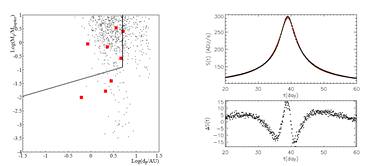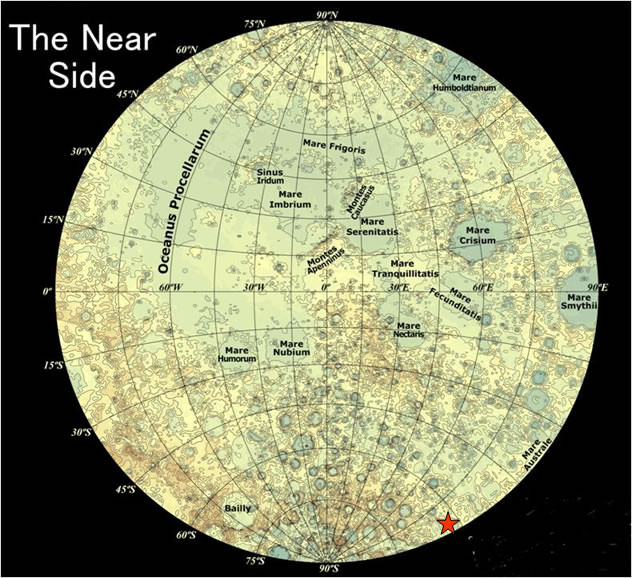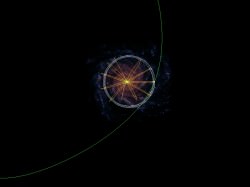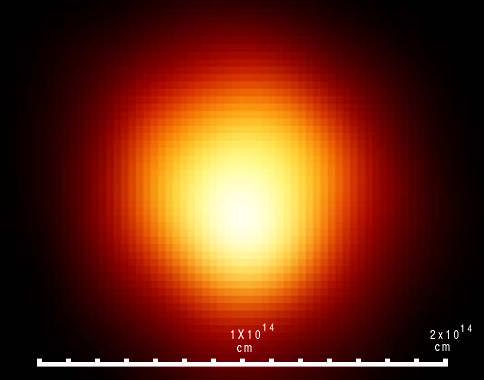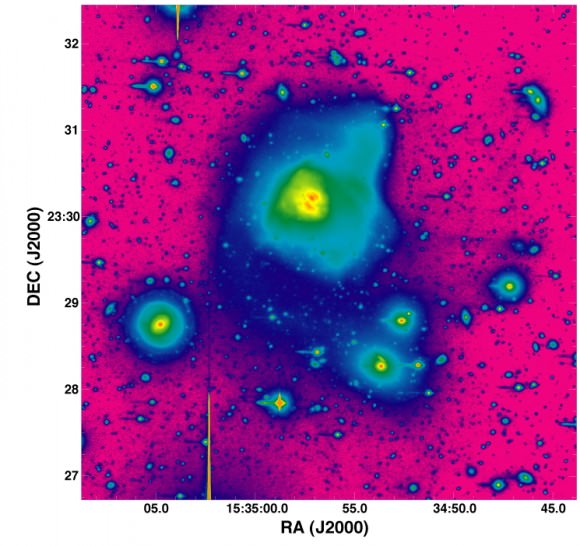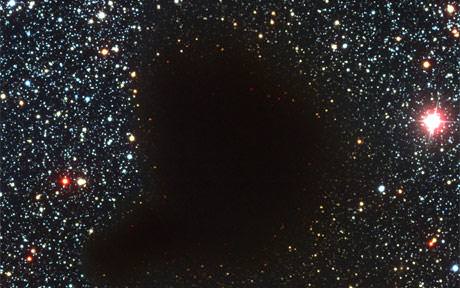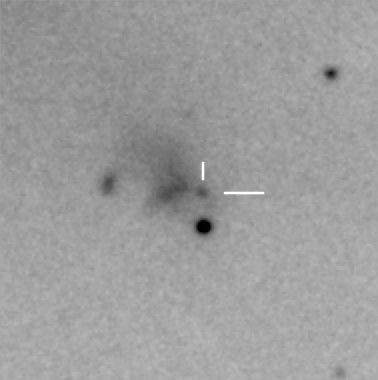[/caption]
Using a technique called Pixel-lensing, a group of astronomers in Italy may have detected a planet orbiting another star. But this planet is unique among the 300-plus exoplanets discovered so far, as it and its parent star are in another galaxy. The Andromeda Galaxy, to be exact. Technically, the star in M31 was found to have a companion about 6 times the mass of Jupiter, so it could be either a brown dwarf or a planet. But either way, this is a remarkable feat, to find an object of that size in another galaxy.
Pixel-lensing, or gravitational microlensing was developed to look for MAssive Compact Halo Objects MACHOs in the galactic halo of the Milky Way. Because light rays are bent when they pass close to a massive object, the gravity of a nearby star focuses the light from a distant star towards Earth. This method is sensitive to finding planets in our own galaxy, ranging is sizes from Jupiter-like planets to Earth-sized ones. And recently, astronomers used gravitational microlensing to be able to see about a dozen or so stars in M31, an extraordinary accomplishment in itself.
The advantage of microlensing is that it works best for more distant objects, therefore in theory it would seem to be ideal for planet hunting in other galaxies. So, the researchers from the National Institute of Nuclear Physics in Italy, led by Gabriele Ingrosso decided to see if this method would work to detect planets orbiting the stars seen in Andromeda. They used a Monte Carlo approach, where they selected the physical parameters of the binary lens system –a star hosting a planet– and calculated the pixel-lensing light curve, taking into account the finite source effects. The team thought they should be able to detect a planet with about 2 Jupiter masses.
The light from one of the stars they studied in Andromeda showed a distinct variability, most likely from a companion, which could be an orbiting planet based on the object’s mass.
One disadvantage to microlensing is that exposures are available for a few days at most, so the team is hoping for another chance to follow up on their discovery.
The team notes in their paper that perhaps an extrasolar planet in M31 might have already been detected since an anomaly in a pixel-lensing light curve was previously reported by another research team in 2004, who claimed that a possible binary system in M31 was responsible for an observed anomaly in an observed light curve.
Source: arXiv, Technology Review Blog

